Key takeaways:
- Understanding different photography pricing models (hourly, flat fee, per-image) significantly affects client perception and satisfaction.
- Location, type of photography, and experience level are key factors influencing photography rates.
- Creating tailored packages enhances client experience and reflects professionalism, emphasizing the importance of customizability.
- Communicating value through storytelling and active listening fosters deeper connections and can turn skeptical clients into loyal advocates.
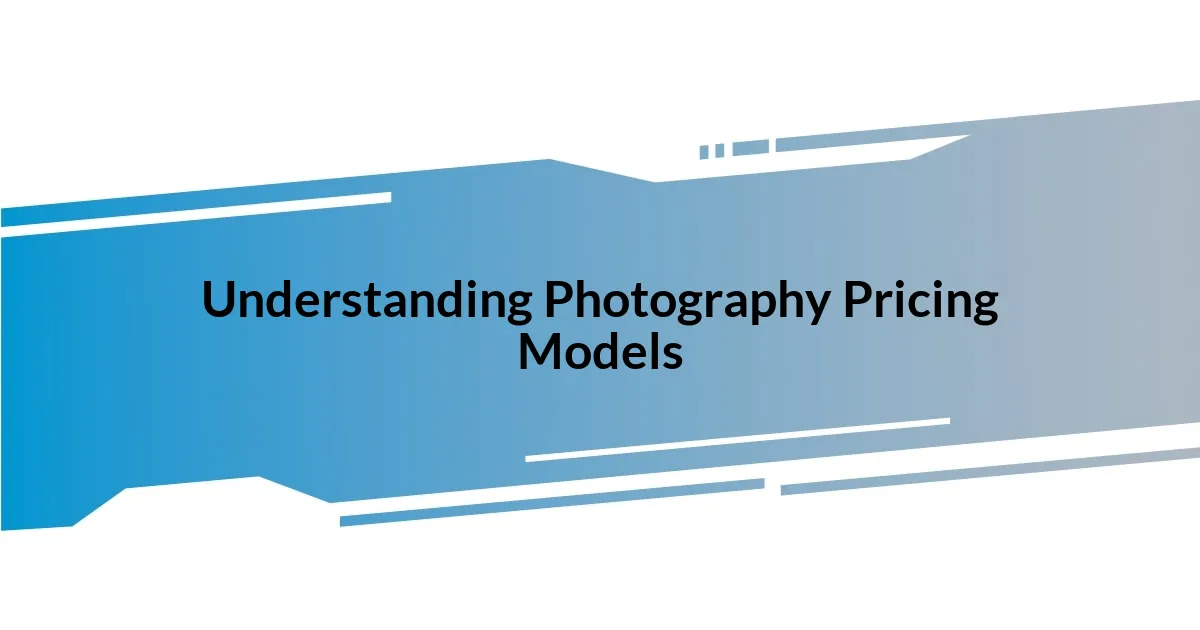
Understanding Photography Pricing Models
When it comes to photography pricing models, I’ve found that understanding the different approaches can drastically change how a client perceives value in my work. For instance, charging hourly versus setting a flat fee has often led to very different client experiences; I remember a time I confidently quoted an hourly rate for a wedding shoot, only to realize later that it left my clients feeling uncertain when they could leave. What if instead, a flat fee had provided them with a sense of security and clarity?
Then there’s the per-image pricing model, which can feel invigorating. I once offered this for a small business that needed fresh images for their website, and it allowed me to showcase my work while empowering them to choose what they liked best. It felt like a collaborative effort, but I couldn’t help but wonder if that’s always the right approach?
Ultimately, understanding these pricing models isn’t just about numbers—it’s about the story each model tells. I’ve seen clients light up when they feel their investment is justified through the value they’re receiving. Isn’t it fascinating how a well-chosen pricing strategy can not only set expectations but also enhance the overall relationship with clients?
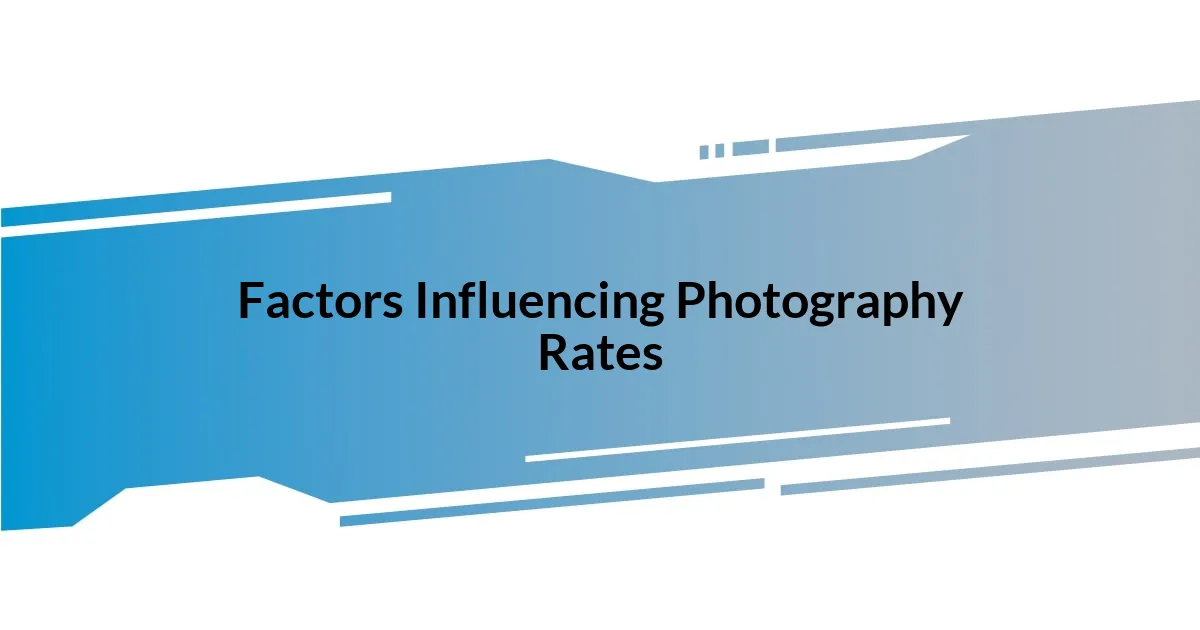
Factors Influencing Photography Rates
In my journey as a photographer, I’ve come to realize that location is a significant factor influencing my rates. For instance, shooting in bustling cities often comes with higher costs, from permits to parking fees, compared to a rural setting. I once had a client who wanted a sunset session on a popular urban bridge. While the images turned out breathtakingly, the added expenses made me rethink my pricing strategy for future city shoots.
The type of photography also plays a crucial role in determining rates. Specialized genres, like commercial or event photography, typically command higher prices due to the expertise and equipment required. I remember taking on a corporate gig where I needed additional lighting gear to make the office shine in the photos. That experience underscored how different styles can dictate the resources needed, influencing what I charge and ultimately shaping my approach to pricing.
Lastly, my experience level undeniably impacts my rates. As I grew in skill and confidence, I found it easier to justify raising my prices. I vividly recall my first big client, where I undercharged out of fear. After refining my skills, I embraced my worth and raised my rates, and the positive response was empowering. It taught me that pricing reflects not just the service but the journey and expertise behind the lens.
| Factor | Description |
|---|---|
| Location | Higher costs in urban areas due to permits and resources. |
| Type of Photography | Specialized genres often demand higher prices due to expertise. |
| Experience Level | More seasoned photographers can command higher rates, reflecting their skills. |
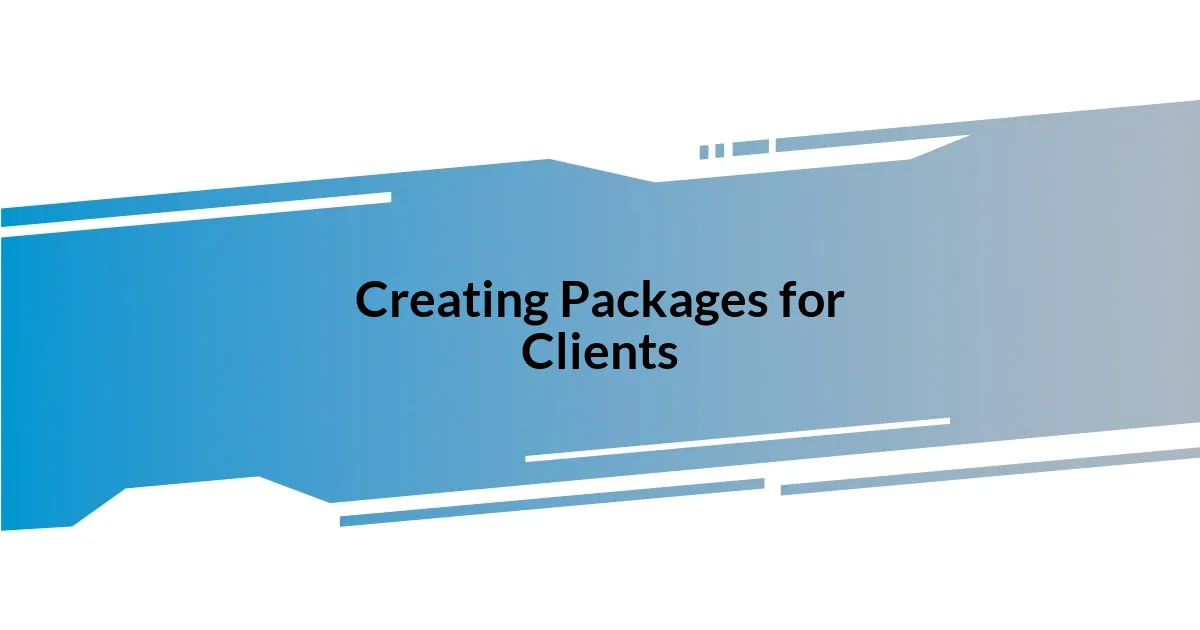
Creating Packages for Clients
Creating packages for clients involves a delicate balancing act of value and clarity. In my experience, it’s essential to tailor each package to align with the client’s needs while ensuring that I am adequately compensated for my work. For example, I once created a wedding photography package that included a pre-session consultation, which not only helped me understand the couple’s vision but also built trust. They felt more involved in the process, and as a result, they were more satisfied with the final product. It’s moments like these that remind me of how critical it is to customize offerings.
When structuring your photography packages, consider these crucial elements:
- Session Length: Clearly define how long the client can expect the shoot to last. Offering multiple durations can cater to different budgets.
- Deliverables: Specify what the clients will receive—whether it’s digital images, prints, or albums—so they know what to expect.
- Add-Ons: Allow clients to personalize packages with options like additional prints or enhanced editing for a more tailored experience.
- Pre-Session Consultation: Offering a consultation helps clients express their ideas, ensuring you’re on the same page before the shoot begins.
I’ve learned that packaging services this way not only enhances the client’s experience but also boosts my overall professionalism as a photographer.
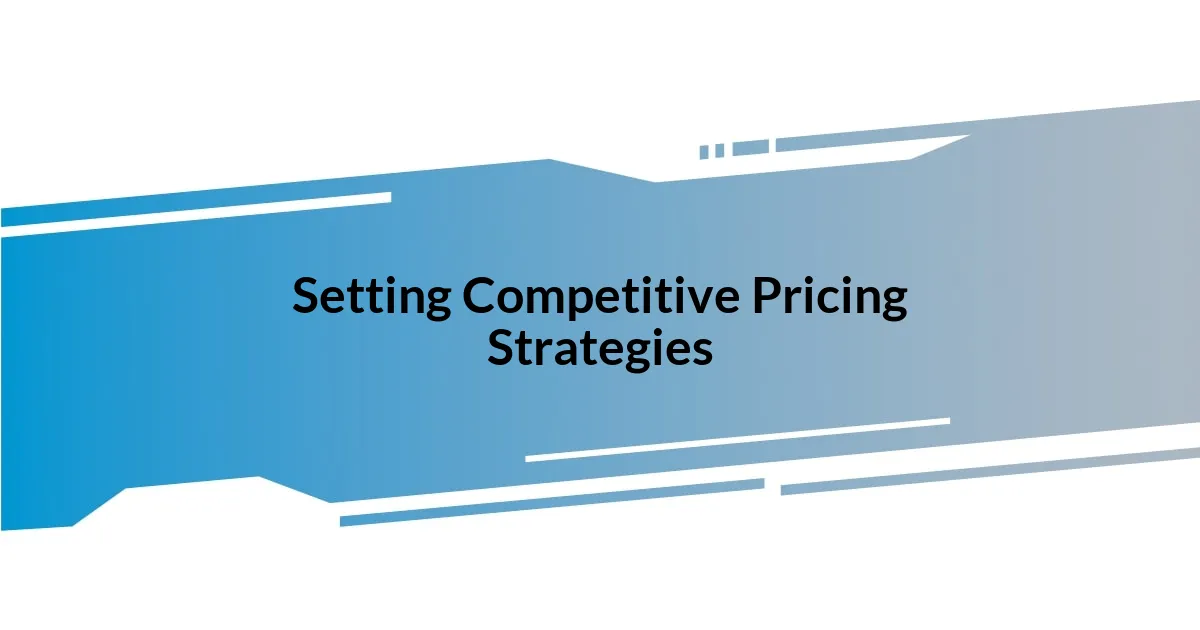
Setting Competitive Pricing Strategies
When it comes to setting competitive pricing strategies, I often reflect on the delicate interplay between my costs and the value I provide. For instance, I recall a time when I was uncertain whether to raise my rates after investing in high-end equipment. I realized that my upgraded gear allowed me to produce superior quality shots, justifying a higher price point. This experience taught me that offering exceptional value to clients can create a sustainable competitive edge, even in a crowded market.
I’ve also discovered that understanding my target audience shapes my pricing strategy. The difference between charging a family for a portrait session versus a corporate client can be substantial. I remember a family that reached out for a holiday shoot, expressing their excitement and limited budget. I decided to offer a special package that balanced affordability with my desire to deliver quality. This not only resulted in a joyful experience for the family but also led to referrals that significantly benefited my business in the long run.
Finally, keeping an eye on competitors has been a vital component of my pricing strategy. I sometimes feel tempted to undercut others, but I’ve learned that authenticity matters more than price wars. I distinctly remember participating in a photography workshop and discussing pricing with peers. Their insights on value perception reminded me that clients are often willing to pay a premium for quality and reliability. Asking myself, “What unique qualities can I bring to the table?” has ingrained a sense of confidence in my pricing decisions.

Communicating Value to Clients
Communicating value to clients goes beyond just sharing the price; it involves painting a vivid picture of the experience they will receive. I remember a client who was initially hesitant about my rates, and during our conversation, I took the time to explain the unique storytelling approach I bring to each shoot. By illustrating how my artistic vision translates into captivating images, I could see the shift in their perception. This interaction reinforced my belief that taking the time to articulate value can transform a skeptical client into a loyal advocate.
I often find that sharing personal stories related to my work fosters deeper connections. For instance, I once captured a moment for a couple that encapsulated their love and journey together. When I shared the behind-the-scenes process of how I aimed to capture their genuine emotion, it turned their apprehension into excitement. It made me realize that clients really appreciate understanding the thought and dedication that goes into each photograph—it’s not just a transaction for them; it’s part of their life story.
Engaging clients in a dialogue about their expectations can be a game changer for establishing value. I’ll never forget a consultation where I asked a couple about their favorite moments from previous events. Their enthusiastic responses revealed insights I hadn’t considered, which helped me tailor our session to their desires. It made me ponder—how often do we listen deeply to our clients? This practice of active listening creates an environment where clients feel valued, reinforcing the notion that their needs are at the forefront of my services.
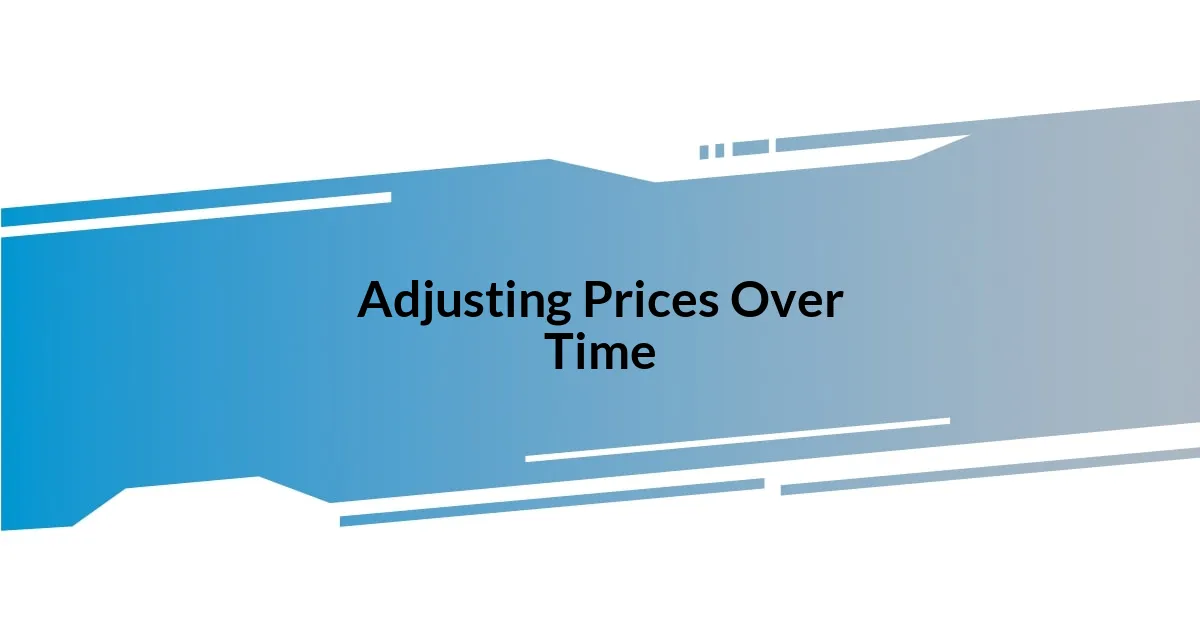
Adjusting Prices Over Time
Adjusting prices over time is an essential part of my photography journey. Looking back, I remember when I initially set my rates—they seemed fair at the time. However, with each new skill I learned and each investment I made in better equipment, I felt a growing need to re-evaluate my worth. It made me wonder: am I truly reflecting the quality I provide and the effort behind every shot?
One significant moment came when I decided to implement a pricing increase after completing an advanced workshop. I was apprehensive about how my clients would react, but I also knew that my improved skills deserved recognition. A few clients, initially hesitant, later expressed how they could see the upgrade in quality, which reassured me that the raise was justified. This experience taught me that sometimes, adjusting prices can also strengthen client trust in my work, signaling that I am committed to continual improvement.
I’ve also learned the importance of regular reassessment. For example, during the off-peak season, I experimented with promotional rates for specific sessions. It was enlightening; while my prices were lower, the influx of inquiries made me realize how much people value accessibility. I found myself asking, “How can I balance demand and sustainability?” By staying flexible and open to change, I’ve been able to navigate my pricing in a way that maintains both my standards and my clients’ satisfaction.